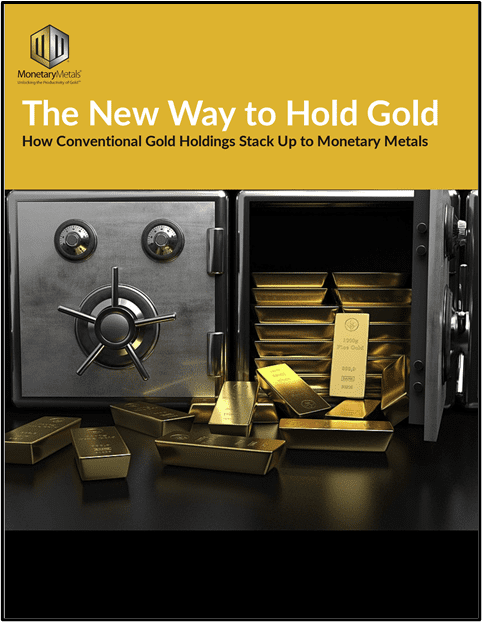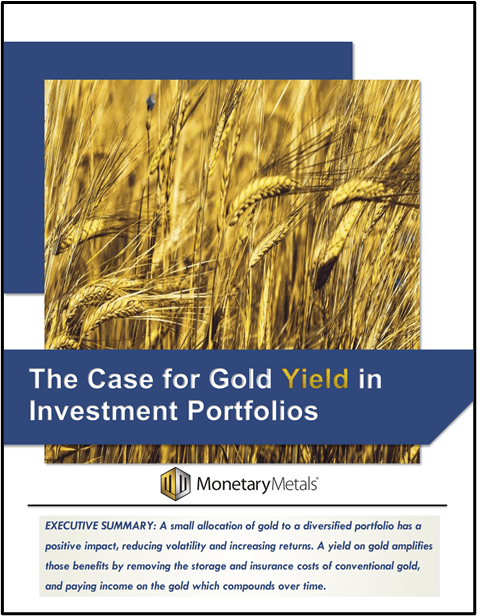Listen to Keith give his talk “The Heat Death of the Economic Universe” here.
Physicists say that the universe is expanding. However, they hotly debate (OK, pun intended as a foreshadowing device) if the rate of expansion is sufficient to overcome gravity—called escape velocity. It may seem like an arcane topic, but the consequences are dire either way. If the rate of expansion is too low, then it will get slower and slower until expansion stops entirely, then finally, begin collapsing again in a Big Crunch. That’s bad enough. But the other possible fate of the universe is even worse. If the expansion is fast enough, then the universe will keep expanding forever. Things will get colder and colder, until the state called the heat death occurs.
If only economics had similarly vigorous controversies. It faces its own existential problems. For example, there is an analogous concept to heat death in the economics universe. Will credit continue to grow, and with it the economy? Or will some force—or law of economics—prevent slow and stop it?
There is a force that can cause the heat death of the economic universe. It is not the moralizing argument that faults man for the sin of wanting more material comfort, and condemns his desire for growth as hubris.
Everyone needs growth. Even the environmentalists couch their anti-growth policies. They want us to stop using energy, but cannot openly promote energy poverty as an ideal. So they talk in terms of sustainability.
Sustainability is an interest concept. For a process or system to be sustainable, it means that there is no reason why it cannot continue indefinitely (well at least until the sun goes red giant and engulfs the Earth, which may not happen because before that our galaxy is on a collision course with the Andromeda galaxy…)
Well, is our economy and its monetary system sustainable? How do you even approach this question in a rigorous way?
We submit one fact for your consideration. To service debt, you must generate income. If you fail to pay at least the interest when due, then the creditors suffer big losses. This impairs their capacity and appetite to lend to others, which suffocates businesses who need capital to expand. So the key is generating enough income to pay interest. We would add on top of that the need to amortize the principal too.
The analogy to heat death of the universe is a pretty good fit. Physicists are not looking at one probe that is moving out of the solar system and will chill down to near absolute zero when its power supply runs out of juice. Nor one object, such as Pluto. They are looking at the universe and all entities in it including all stars and all life on all planets.
Similarly, we as economists must look at the economic universe and all business enterprises and people in it. If one business is stranded with, e.g. an obsolete product such as mobile phone that can only do voice calls, it will fail and default on its debts. That is not under question. The question is: can it happen to the entire economy? If it does, then the monetary system will fall and everyone will lose their savings.
If it can happen what are the circumstances?
So far, we said income (that is net income, after cost of goods sold and all other expenses) must exceed debt service. And, perhaps including debt amortization.
Measuring these two quantities, much less estimating them years or decades in the future, would be quite a challenge. Just like measuring the velocities and distances of all objects in the universe.
Fortunately, we can look at something much easier. We know the economy is in motion today. So we just need to know the trend. If income is rising at least as fast as debt service, then we can say that the economy is sustainable.
We have been writing about this trend for the last month, though we did not describe it in this context. The variable we need to measure is none other than marginal productivity of debt! MPoD, as we will call it here for brevity, is a measure of how much new GDP is added for each freshly borrowed dollar.
The graph we published on Oct 15 is included again here.
Aside from the anomaly when MPoD moved up sharply in the wake of the great financial crisis (which we discussed here), it is an unmistakable falling trend. Post 2010, it is falling again from that higher level. This trend spans many decades, and it is no fluke.
A falling MPoD means we get less and less GDP for each borrowed dollar. Or conversely, we have to borrow more and more dollars to get a dollar of GDP. This is significant as growth in net income can be no greater than growth in GDP (but it is likely a lot slower, a whole ‘nother topic). This graph is saying that the income to debt ratio is falling.
We are getting close to our statement above, income must exceed debt service or else there will be a heat death of the economic universe. We have now proven income is growing slower than debt total. We have one more step, to prove income is growing slower than debt service.
Normally, debt service would grow proportionally with debt. It may seem fortunate that we don’t live in a normal universe, as we shall see in a moment. We live in an abnormal place, which is subject to one of the planks proposed by Karl Marx in his infamous Communist Manifesto.
“5. Centralisation of credit in the hands of the state, by means of a national bank with State capital and an exclusive monopoly.”
The central bank conducts what it calls monetary policy. The net result of monetary policy for 36 years so far is falling interest rates. Keith has written about the various ways that falling interest causes destruction in his series of articles on yield purchasing power.
However, in light of the heat death question, falling interest would seem to have the potential to save us. It is obvious that servicing the same debt at 1% interest has a lower monthly payment than at 10%. This is why many economists say there is no problem. We are told that, “debt service today is not a greater percentage of GDP than it was when the debt was much lower decades ago.” That may be true, and we won’t even get into if net income is the same percentage of GDP as it was (we would bet an ounce of fine gold against a soggy dollar bill it isn’t).
We want to make a different argument. If debt service depends on falling interest, what happens when interest hits zero? Here is another good analogy to physics, which also asks what happens at zero. In physics, nothing. Literally. Motion stops on even a molecular level at absolute zero.
What happens to an economy when interest—we mean the long-term bond rate—falls to zero? What happens when businesses can borrow at 0%? Well, obviously, debt service goes to zero (not including amortization of the principal). With no cost to borrow, businesses can borrow for activities that produce no economic value(!)
In a normal economic universe, interest is greater than zero. As we said last week:
“A dollar to be paid next year is worth less than a dollar in the hand today. One reason is that we are mortal beings. In order to be alive next year, we must remain alive every single day between now and then. There are natural reasons for time preference—the desire to have a good today, and not postpone it. We are also not omniscient. Something may come up, such as an illness, which forces us to consume what we did not plan to consume.
Another reason is, of course, risk. Unlike the magic machine in our example, a business enterprise may cease to make money for any number reasons including a new competitor or changing customer preferences.
For many reasons, a dollar to be paid next year is not worth a dollar today. A dollar to be paid in ten years is worth even less. Future payments must be discounted. The discount is related to the interest rate, and it shares many of the same causes.”
At zero, this economic law is violated. No one can act as if he had no time preference, which is exactly what zero interest requires him to do.
And zero, itself, is not sustainable anyway. Assuming that some amount of amortization is required, then the debt service becomes unbearable and the interest rate must keep falling.
When interest is positive, or even zero, business borrowing must fund activities that generate a positive return (even if only share buybacks). However, when interest goes negative, they can borrow to engage in capital-destroying activities. So long as the rate of destruction is below the rate of interest.
For example, suppose an enterprise destroys its investors’ capital at 1% per year. That’s bad. But what if it can borrow this capital at -2%? The investors lose 2% per year. But the business nets +1%. Positive one percent. What is profitable to do, will be done at large scale across the entire economic universe.
At negative rates, investors lose a bit of their capital every year. They are subsidizing businesses who are destroying it bit by bit every year.
Negative interest rates are not sustainable. A falling interest rate can make debt service cheaper. However, it does not solve the problem of falling marginal productivity of debt. The heat death of the economic universe looms closer every day (we make no prediction of the timing of this here, that will be the subject of a future series).
So now we can write an economic law:
If MPoD < 1, the economy is unsustainable
That is, the heat death of the economic universe is inevitable.
Note that MPoD was under 1 even as long ago as the 1950’s (we suspect this pathology began either around the time of President Roosevelt’s gold confiscation in 1933, or the creation of the Federal Reserve in 1913, but we don’t have the data going back that far).
Prior to the crisis of 2008, MPoD fell below 0.1. Even now with its post-crisis boost, it is well under 0.4, and falling.
It is time for gold to enter the mainstream monetary discussion. Interest rates and MPoD do not fall when there is a free market in money and credit. And the market will choose gold, if it is free to do so.
The prices of the metals ended all but unchanged this week, though they hit spike highs on Thursday. Particularly silver his $17.24 before falling back 43 cents, to close at $16.82.
It was not a gentle fall back. In about an hour and fifteen minutes on Friday morning (as we Arizonans reckon the time), the price of silver dropped from $17.16 to $16.76. Was this a case of the infamous manipulation we’ve all read about? We can’t tell you who did it, but we can show you a clear picture of what happened.
In any case, it seems that either Fed Chairman Appointee Powell is not good for silver, or else that the price of silver has little to do with continuation of current Fed (central) planning.
We will look at intraday gold and silver supply and demand fundamentals. But first, here are the charts of the prices of gold and silver, and the gold-silver ratio.
Next, this is a graph of the gold price measured in silver, otherwise known as the gold to silver ratio. The ratio fell a hair.
In this graph, we show both bid and offer prices for the gold-silver ratio. If you were to sell gold on the bid and buy silver at the ask, that is the lower bid price. Conversely, if you sold silver on the bid and bought gold at the offer, that is the higher offer price.
For each metal, we will look at a graph of the basis and cobasis overlaid with the price of the dollar in terms of the respective metal. It will make it easier to provide brief commentary. The dollar will be represented in green, the basis in blue and cobasis in red.
Here is the gold graph showing gold basis and cobasis with the price of the dollar in gold terms.
We see a rising cobasis (our measure of scarcity) along with a rising price of the dollar (i.e. falling price of gold, in dollar terms). This is not surprising; it is the typical pattern nowadays.
Our calculated Monetary Metals gold fundamental price moved down by $12.
Now let’s look at silver.
We also see the cobasis tracking the price of the dollar. Look at how they go down together on Wednesday and Thursday, and up together on Friday. Keep in mind that the contract roll is well underway, that it impacts the silver basis more than the gold basis. Mechanically, the roll involves selling the expiring contract.
Our calculated Monetary Metals silver fundamental price rose $0.22.
Now, on to Friday’s crash. This is the opposite situation from a week ago, when gold and silver got Powelled. In more ways than one.
In Part II of this article, we show intraday graphs of both metals for Wedneday’s price spike and Friday’s price crash, and provide our analysis of the basis moves.
Make sure to subscribe to our YouTube Channel to check out all our Media Appearances, Podcast Episodes and more!
Additional Resources for How to Earn Interest on Gold
If you’d like to learn more about how to earn interest on gold with Monetary Metals, check out the following resources:
In this paper we look at how conventional gold holdings stack up to Monetary Metals Investments, which offer a Yield on Gold, Paid in Gold®. We compare retail coins, vault storage, the popular ETF – GLD, and mining stocks against Monetary Metals’ True Gold Leases.
The Case for Gold Yield in Investment Portfolios
Adding gold to a diversified portfolio of assets reduces volatility and increases returns. But how much and what about the ongoing costs? What changes when gold pays a yield? This paper answers those questions using data going back to 1972.


 :
:








Keith-
Two possibilities for the relative improvement in the debt prod. number since 2009. First, is the global central bank stimulation. This would show up elsewhere but not in US debt numbers. Especially BOC which I would imagine has a chart that looks decidedly worse since 2009, given their massive debt increase (shadow included) and suspicious GDP numbers in terms of quality. This does flow to US GDP through equities and real estate and the general real economy as well. Secondly, would be derivative growth. These can be off balance sheet from a debt perspective but flow to earnings in a profit situation.
Great article Keith, many thanks!
Looking at the chart, ‘mpd’ peak to trough since 2010 is 80 cents or more, like a big dose of morphine for a short term boost that quickly fades.